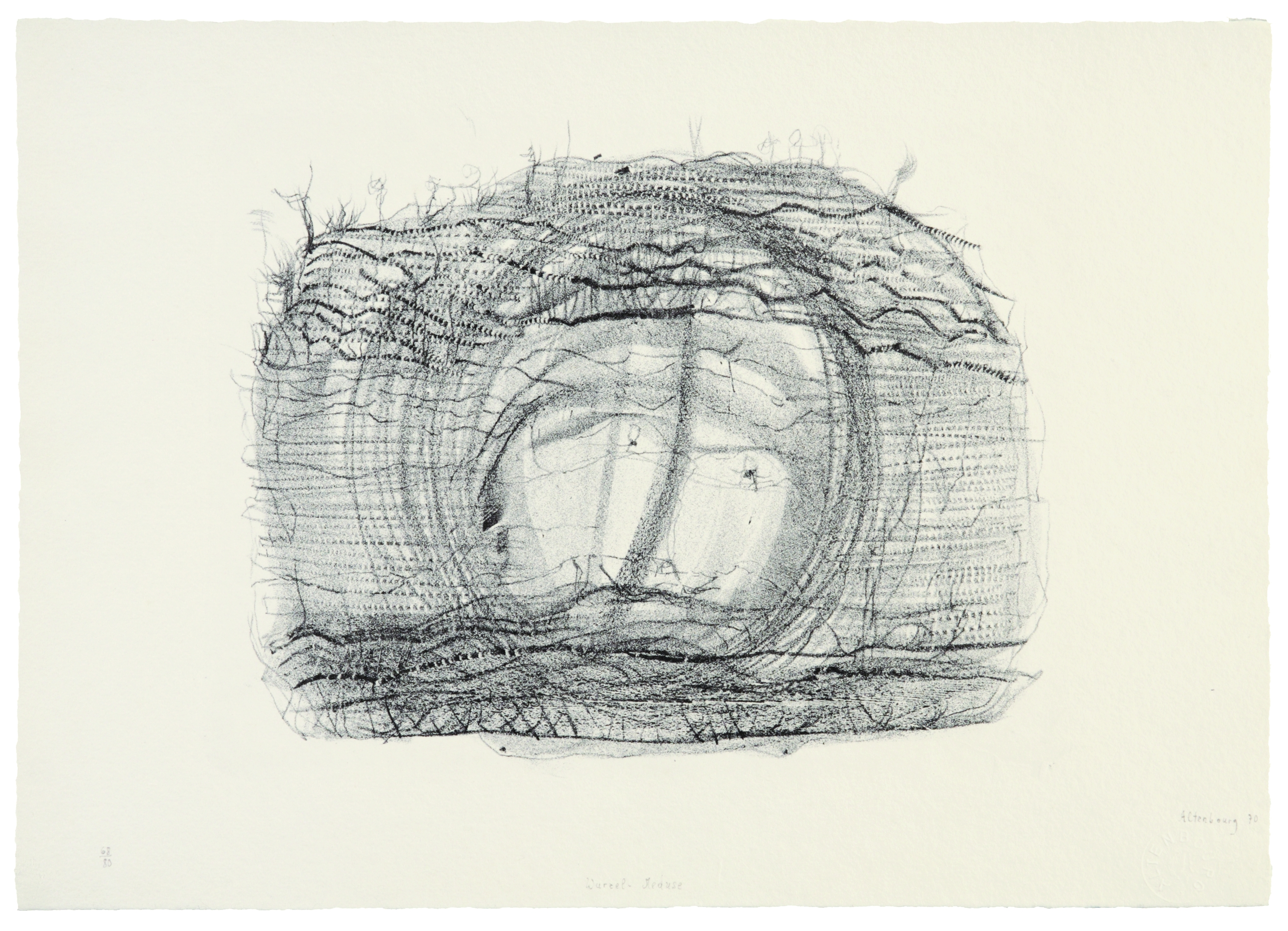Lithograph on handmade paper
Dimensions: 27 x 38 cm
Signature, inscriptions, markings: signed and dated at lower right, numbered at lower left, titled at lower middle
Copy Number: 68/80
Accession Number: 1001519
In antiquity, Medusa was regarded as a terrifying figure whose mere sight turned her counterpart to stone. As the only mortal of the three Gorgon sisters, her snake-armed head was cut off by the Greek mythical hero Perseus with the help of Athena, whereupon Pegasus sprang from her torso. In gratitude, Perseus gave Athena the still deadly Medusa's head to Athena, which she has carried on her shield ever since.
While Medusa was depicted in ancient art as an inhuman monster with a snarling grimace, her appearance changed since the Renaissance to a female figure, until Caravaggio gave her a completely new meaning in the role of the victim. No longer is Medusa a mythical figure of terror that makes us freeze; the expression of her severed head, eyes frozen in death, and mouth open in a scream now convey a different horror. Since Böcklin, one feels pity rather than fear towards the sickly, pale face with the sad, dark eyes and the lips slightly opened for the last breath or for a silent scream. Thus, in the course of her depiction, Medusa turned from a mythical monster into a symbol of a psyche that was rather pitiful and suppressed by reason.
And Gerhard Altenbourg's root Medusa no longer shows her original form, but a round face, like an Ophelia floating under algae. Still in 1969 he wrote: "But in the shadow lurked the Medusa, the monster; enigmatic Psyche. Rose and phallus at the same time. She was inside me and lurked above me. (...) These are the years of grasses and stone cracks, of digging in the wildernesses of Psyche: the hours of the nocturnal suns. The passages into and under the skin, the transformations where ashes sprouted from blossoms and vice versa. "1 Has Altenbourg come to terms with the horror, has he accepted the roots of his ego? Hidden from the roots and shaped by them, Meduse no longer evokes fear here, but rather gently seizes our curiosity.
Does our mirrored self look out at us from the tangled underground? Is she the tormented face of Mother Earth, meant to inspire us to new respect? Do we see in her the horror of the unconscious? Something mystical seizes us at the sight of her, when we penetrate with our eyes into the intimacy of the earthy realm that holds her safe. Is it still alive, asleep, or do the roots form its coffin in the damp soil?
Veronika Berger
1 Gerhard Altenbourg, Narbenrisse beim Durchstreifen jener Hügellandschaft. Autobiographische Notizen, June 1969, in: Dieter Brusberg (ed.), Gerhard Altenbourg, Das einsschauende Ausschauen. Köpfe und Szenen 1949 bis 1986, Berlin 1986, p. 5. Anneliese Ströch, Dieter Brusberg (eds.), Gerhard Altenbourg, Der Gärtner. Eine Monographie in Bildern, Berlin 1996;
